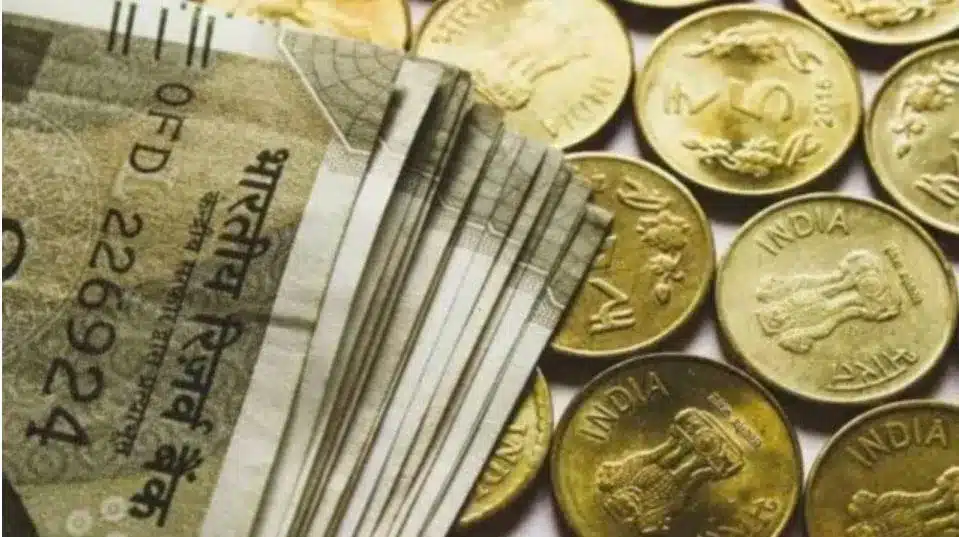What’s in today’s article?
- Why in News?
- Falling rupee
- Outlook for the Rupee
Why in News?
On October 11, 2024, the Indian rupee ended above the 84 per US dollar mark for the first time, closing at 84.07 after touching 84.10 during the day. A day before, the rupee had closed at 83.98.
The fall came amid outflows from foreign institutional investors, concerns over rising oil prices, and higher demand for the US dollar from foreign banks.
Falling rupee
- Meaning
- When it is reported that the rupee has fallen to a low of 80 dollars, it basically means that one needs Rs 80 to buy a single dollar.
- This is important when buying not just American goods but also other goods and services (say crude oil).
- In a free-market economy, the exchange rate is decided by the supply and demand for rupees and dollars.
- If, in India, demand for dollars is more in comparison to the demand for rupee, the exchange rate will fall or weaken for rupee and rise or strengthen for dollar.
- However, in India, the market does not fully determine the exchange rate. RBI occasionally intervenes in the foreign exchange (forex) market to ensure that the rupee’s price does not fluctuate too much.
- Reasons for falling rupee
- Rising Crude Oil Prices: Increased oil prices have raised concerns about India’s trade deficit and inflation.
- The West Asia crisis has a bearing on the oil prices.
- FII Outflows: Foreign investors are moving funds to China, following China’s stimulus measures.
- Foreign investors have been following a strategy of ‘Sell India, Buy China’ after the Chinese authorities announced monetary and fiscal measures to stimulate the slowing economy.
- Increased Demand for the US Dollar: Foreign banks are demanding more US dollars, further pressuring the rupee.
- Weak Domestic Markets: Local stock market performance also contributed to the rupee’s decline.
- Rising Crude Oil Prices: Increased oil prices have raised concerns about India’s trade deficit and inflation.
- Impact
- It could increase cost of imports, raise overseas education costs, make foreign loans costly for companies and has the potential to stoke inflation, which is already ruling at 7%.

- Impact on inflation management
- The most crucial impact would be on inflation as the country imports nearly 80% of its crude oil needs.
- This would mean that imports would become costlier and travel through the value chain to raise input costs.
- Impact on current account deficit
- Since a large proportion of India’s imports are dollar-denominated, these imports will get costlier.
- Costlier imports, in turn, will widen the trade deficit as well as the current account deficit, which, in turn, will put pressure on the exchange rate.
- Positive impact
- One positive impact could be that remittances from overseas could become attractive.
- A fall in the rupee can also benefit India’s exporters – unless they import raw materials, which would become more expensive.
- Steps that could be taken to prevent the slide
- Sell large amounts of dollars to support rupee (by increasing the supply of dollar)
- Raising interest rates to make Indian investment attractive
- Removing reserve restrictions on dollar deposits with banks
- Allowing traders to make settlements in rupee to reduce dollar dependence.
Outlook for the Rupee
- Analysts expect the rupee to remain volatile, driven by uncertainties in oil prices and fluctuations in the dollar index.
- The rupee may face continued pressure from FPI selling and geopolitical uncertainty, particularly from tensions in the Middle East.
Q.1. What caused the Indian rupee to fall to 84 per US dollar?
The fall was triggered by rising crude oil prices, outflows of foreign investment, and increased demand for the US dollar by foreign banks.
Q.2. How does a weak rupee impact the Indian economy?
A weaker rupee increases the cost of imports, especially crude oil, leading to higher inflation and a widened trade deficit, while also benefiting exporters.
Source: Rupee hits an all-time low of 84 against the US dollar: factors leading to the fall and the outlook | First Post | Indian Express
Last updated on August, 2025
→ UPSC Mains Admit Card 2025 has been released on 14th August at www.upsc.gov.in.
→ UPSC Mains 2025 will be conducted on 22nd August 2025.
→ UPSC Notification 2025 was released on 22nd January 2025.
→ UPSC Calendar 2026 is released on 15th May, 2025.
→ UPSC Prelims Question Paper 2025 and Unofficial Prelims Answer Key 2025 are available now.
→ UPSC Prelims Result 2025 is out now for the CSE held on 25 May 2025.
→ The UPSC Vacancy 2025 were released 1129, out of which 979 were for UPSC CSE and remaining 150 are for UPSC IFoS.
→ UPSC Prelims 2026 will be conducted on 24th May, 2026 & UPSC Mains 2026 will be conducted on 21st August 2026.
→ The UPSC Selection Process is of 3 stages-Prelims, Mains and Interview.
→ UPSC Result 2024 is released with latest UPSC Marksheet 2024. Check Now!
→ UPSC Toppers List 2024 is released now. Shakti Dubey is UPSC AIR 1 2024 Topper.
→ Also check Best IAS Coaching in Delhi















